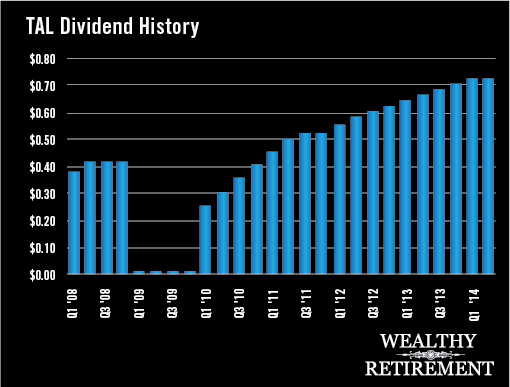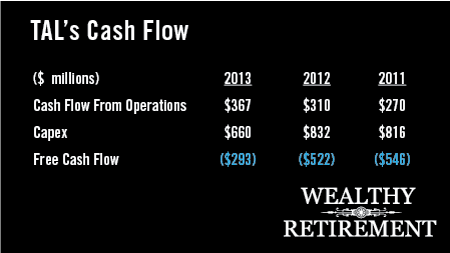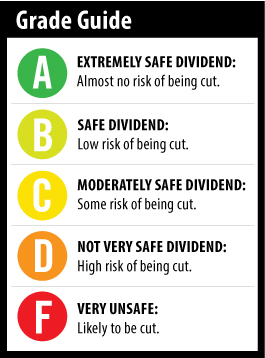 There are a lot of reasons to like TAL International Group (NYSE: TAL), especially for me. First of all, it’s located where I grew up, Westchester, New York. Also, by using my Dividend Multiplier strategy, subscribers of my service collected 5.9% in income from TAL in just seven weeks.
There are a lot of reasons to like TAL International Group (NYSE: TAL), especially for me. First of all, it’s located where I grew up, Westchester, New York. Also, by using my Dividend Multiplier strategy, subscribers of my service collected 5.9% in income from TAL in just seven weeks.
Less sentimental reasons to like the company include a juicy 6.8% annual dividend yield and the fact it has a 13% share in the maritime container market.
[ad#Google Adsense 336×280-IA]Have you ever driven past a port and seen one of those huge Maersk or Yang Ming cargo ships with hundreds of containers on board?
Chances are those were TAL’s.
The company has worked with the leading shippers for an average of more than 30 years.
But how about the safety of TAL’s dividend?
That’s what Dan R. wants to know.
Well, Dan, it’s a bit of a mixed bag.
When Calamity Strikes
The company has raised the dividend for five straight years.
However, when the economic crisis hit, TAL slashed its dividend to next to nothing.
The dividend fell from $0.41 per quarter to just a penny. Management kept the dividend at $0.01 for four quarters before raising it to $0.25 and back on its upward trajectory.
 It wasn’t until March 2011 that the dividend was above the $0.41 that was paid before the recession.
It wasn’t until March 2011 that the dividend was above the $0.41 that was paid before the recession.
Where Does the Money Come From?
You don’t have to be an accredited analyst to understand a basic dividend concept. A company should generate more cash flow than it pays out to shareholders in order for the dividend to be sustainable.
Unfortunately, that’s not the case with TAL International.
The company actually generates a ton of cash operating its business. The problem is it has to invest so much in equipment that those costs, known as capital expenditures (capex), eat into all of the cash flow and then some. Capex is not taken into account in the calculation for earnings, which is why it is a separate item on the cash flow statement and used to determine free cash flow.
Free cash flow is cash flow from operations minus capex.
 The company’s free cash flow is negative.
The company’s free cash flow is negative.
In other words, though it is profitable, when you take into account how much money it has to invest into its business, it actually is bleeding cash every year.
And that’s expected to continue for the foreseeable future. Though cash flow from operations is projected to continue growing, it will not eclipse capex any time soon, meaning it costs the company money every year to run its business.
So how does it pay for all of those expenditures and the dividend?
Debt.
TAL International Group has $100 million in cash and more than $2.8 billion in debt.
Every year, it goes into the debt market to raise more money.
 In February, the company sold $300 million in notes.
In February, the company sold $300 million in notes.
In each of the past two years, it sold $250 million worth.
That’s not sustainable forever.
At some point, the company must generate enough cash to fund the business and dividend.
Because the company has shown a commitment to raising the dividend every year, I don’t think a cut is imminent.
But as we saw in 2009 when it all but eliminated the dividend when times got tough, and because the company doesn’t create enough cash to pay the dividend, the dividend isn’t secure.
Dividend Safety Rating: C
— Marc Lichtenfeld
[ad#DTA-10%]
Source: Wealthy Retirement
